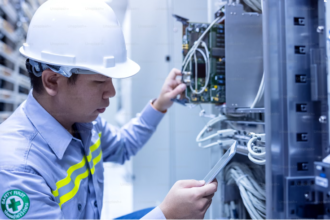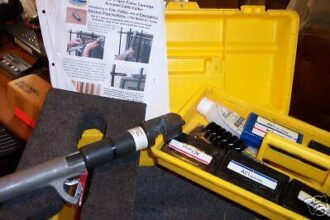When it comes to precision and performance, the GLP050VX Toss Sensor is a game-changer in glp050vx toss sensor technology. Whether you’re in the manufacturing industry, robotics, or logistics, ensuring your toss sensor is properly calibrated is critical for achieving optimal results.
But how do you calibrate this complex device without tearing your hair out? That’s exactly what we’ll cover in this step-by-step guide. With expert insights, troubleshooting advice, and best practices, you’ll have your sensor up and running flawlessly in no time.
What is the GLP050VX Toss Sensor?
The GLP050VX Toss Sensor is an advanced sensor that measures movement, velocity, and position in dynamic environments. Known for its versatility and accuracy, it’s widely used across industries like automation, warehousing, and robotics. This sensor’s ability to provide real-time data ensures processes run smoothly, from balancing robotic arms to managing conveyor belts.
However, like all complex devices, it requires proper calibration to deliver reliable results. If you skip this, even the best sensors could give inaccurate readings, leading to setbacks or costly inefficiencies.
Why Calibration Matters
Think of calibration as a routine health check for your toss sensor—it ensures your sensor is healthy and performing to its full potential. Without proper calibration, you risk dealing with inaccurate measurements, misaligned data, or even sensor failures.
Experts agree that skipping calibration can lead to long-term operational inefficiencies. “Calibration is to sensors what tuning is to musical instruments,” says Heather Collins, a data engineer experienced in industrial IoT systems. “If it’s off by even a small degree, the entire operation could hit a sour note.”
Benefits of Regular Calibration:
- Improved Accuracy – Consistent readings mean fewer errors in your operations.
- Extended Lifespan – Regular maintenance ensures the sensor can run optimally for years.
- Compliance with Standards – Some industries require regular calibration for safety and performance.
Now that the “why” is clear, let’s get into the “how.”
Understanding the Calibration Process
Before jumping into calibration, it’s important to grasp how the GLP050VX sensor interprets data. Like other sensors, it relies on internal algorithms to process physical movements into measurable data. Calibration teaches the sensor to recognize its baseline and adjust its settings for environmental conditions.
Here’s a quick analogy for clarity. Imagine wearing a pair of prescription glasses—you adjust them to suit your eyesight, right? Calibration works in much the same way. It “adjusts” the sensor to see and interpret its environment accurately.
Tools You’ll Need
To calibrate the GLP050VX Toss Sensor, gather the following tools:
- A calibration stand or stable flat surface
- A computer with the calibration interface software installed
- Connection cables (included with the sensor kit)
- A power source for your sensor
Feeling prepared? Here comes the fun part!
Step-by-Step Guide to Calibrating the GLP050VX Toss Sensor
Step 1 – Set Up Your Calibration Workspace
- Ensure your calibration environment is vibration-free. Even small disturbances can cause errors during calibration.
- Secure the sensor on a flat, stable surface. Many users recommend using a certified calibration plate for accuracy.
Step 2 – Install the Calibration Software
- Connect your computer to the sensor using the provided cable.
- Download and install the official GLP Calibration Interface software from the manufacturer’s website.
- Restart your computer after installation to avoid compatibility issues.
Step 3 – Connect and Power On
- Plug in your sensor to the computer.
- Launch the calibration software and select the GLP050VX Toss Sensor from the device menu.
Step 4 – Perform Baseline Calibration
- Follow the software prompts to initialize baseline calibration.
- During this step, the sensor identifies its neutral position and adjusts its internal readings.
- Save the baseline data once completed.
Step 5 – Adjust for Environmental Factors
- Use the software to account for environmental conditions such as temperature and humidity.
- For precise calibration, input the factory-recommended environmental settings available in the user manual.
Step 6 – Test and Reiterate
- Run the test feature within the calibration software to ensure accurate data output.
- If discrepancies appear, don’t panic—adjustments can be made and tested again.
Troubleshooting Common Calibration Issues
Sometimes, despite your best efforts, your GLP050VX Toss Sensor might not perform as expected. Here’s how to troubleshoot common problems:
Problem 1 – Sensor Won’t Connect to Software
- Solution: Check that all cables are properly plugged in and that the sensor is compatible with your operating system.
Problem 2 – Calibration Results Appear Off
- Solution: Repeat baseline calibration, ensuring the sensor is positioned correctly. Double-check environmental input settings.
Problem 3 – Errors in Test Data
- Solution: Ensure no external vibrations are affecting the readings. If problems persist, contact tech support for firmware updates.
Best Practices for Maintaining Sensor Accuracy
Once your sensor is calibrated, don’t stop there! Regular maintenance keeps it functioning at its peak.
Tips for Long-term Performance:
- Schedule Regular Calibrations – Most experts recommend calibrating the GLP050VX every three months.
- Protect Against Dust and Moisture – Store the sensor in a clean, dry environment when not in use.
- Monitor Firmware Updates – Manufacturers frequently release updates that enhance sensor accuracy and functionality.
Real-World Benefits of a Perfectly Calibrated Toss Sensor
When your GLP050VX Toss Sensor is operating at full capacity, the benefits are significant:
- Seamless Automation: Robotics applications rely on precise data to function effectively, reducing downtime.
- Improved Quality Control: Accurate measurements enhance control over product quality in industries like manufacturing.
- Enhanced Operational Efficiency: Well-calibrated sensors reduce errors, saving time and money.
Optimize Your Sensor Performance Today
Calibrating the GLP050VX Toss Sensor might seem complicated at first, but a systematic approach makes the process straightforward. By following this guide and prioritizing regular calibration, you’ll ensure your sensor performs optimally for years to come.
Whether you’re streamlining operations or pushing the boundaries of automation, calibration is key to unlocking the full potential of your technology. Take the time to perform it correctly—you’ll thank yourself for avoiding missteps later.
For more expert advice and sensor-related tips, stay tuned for updates or consult your manufacturer’s support resources. Your operations deserve nothing less than peak precision.













